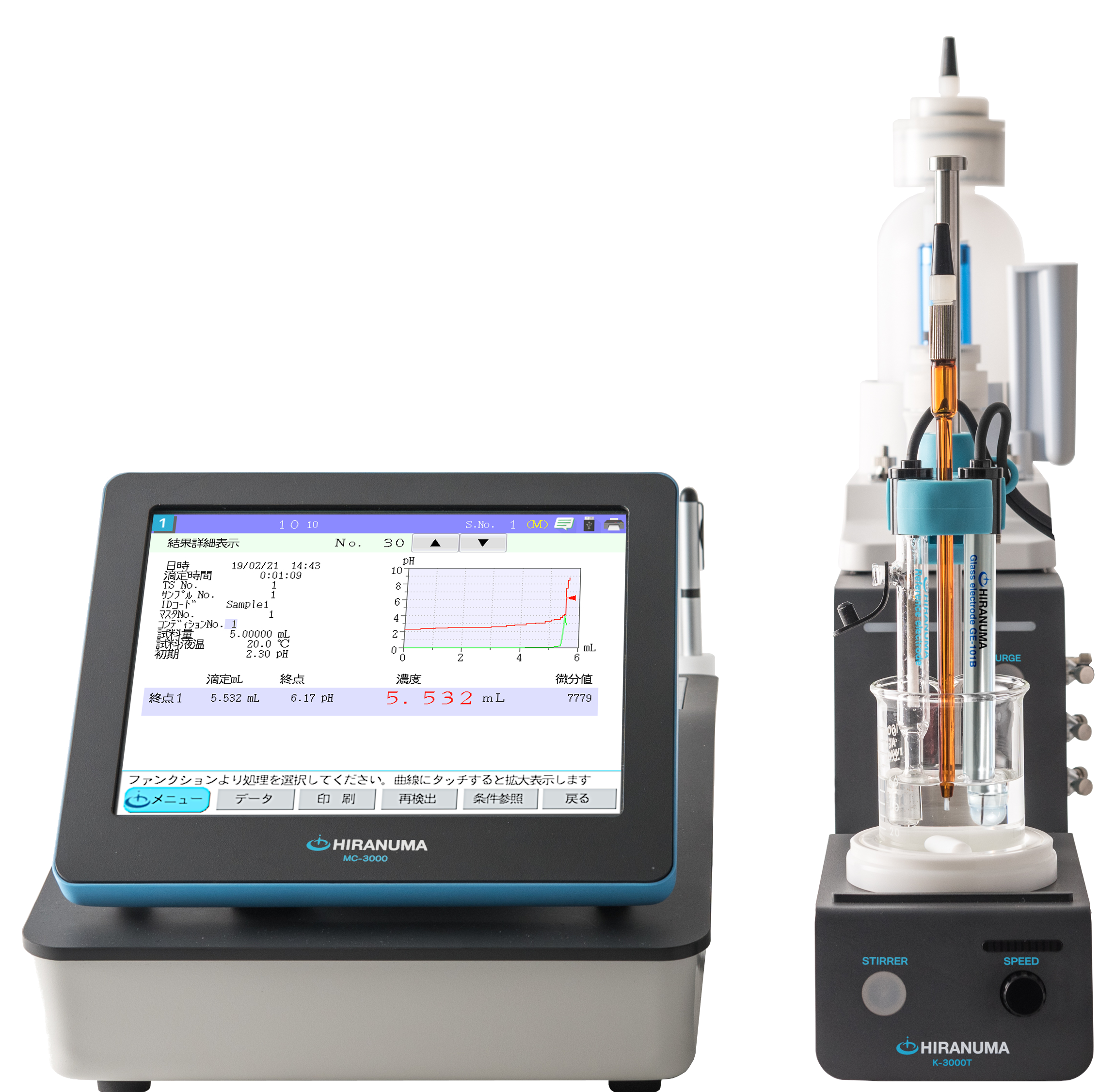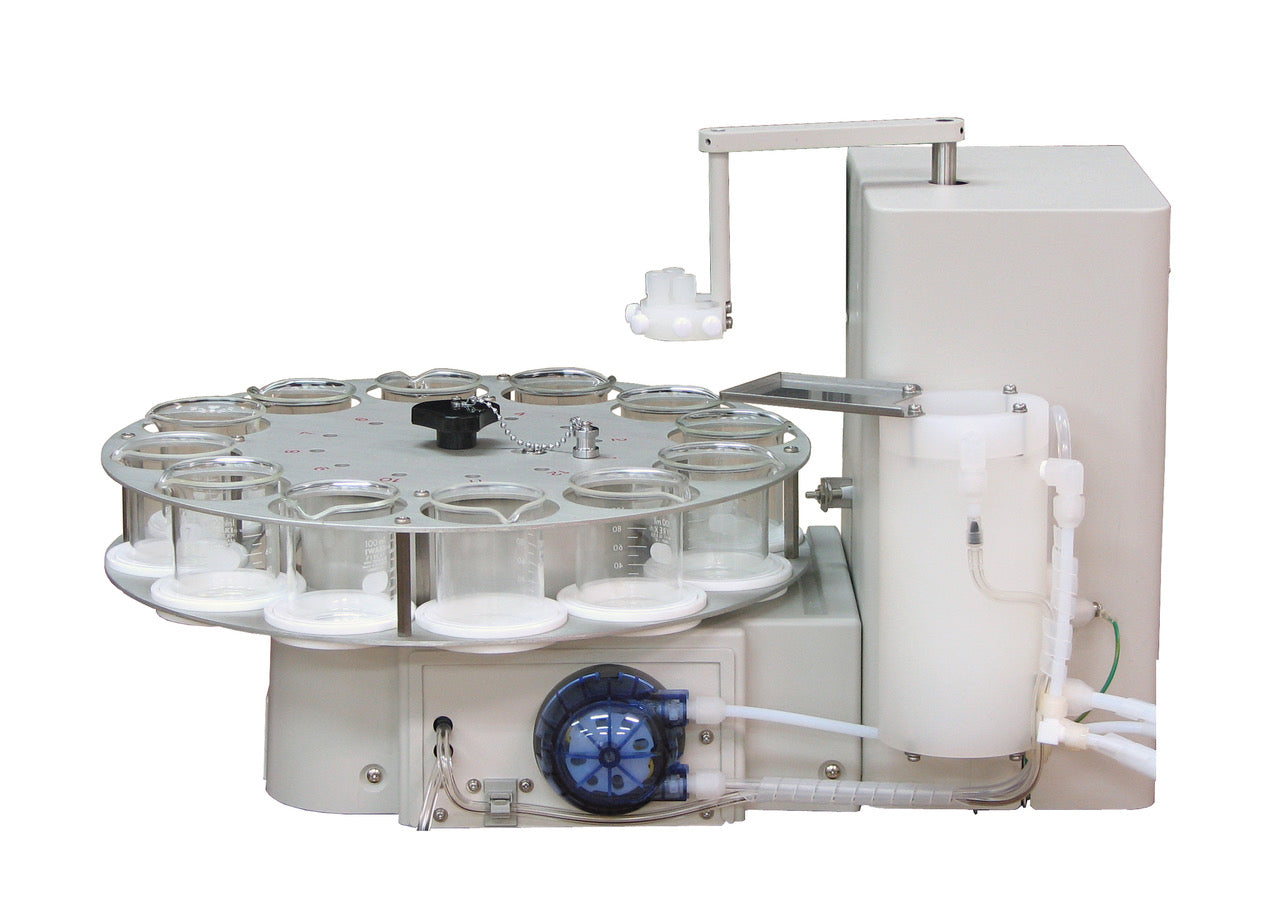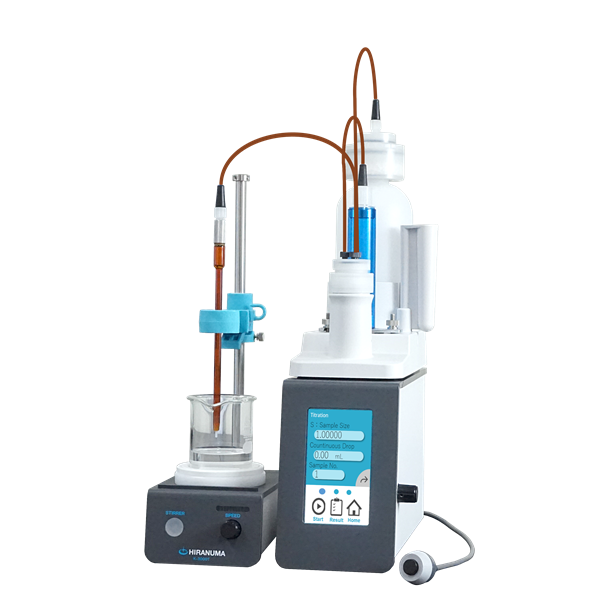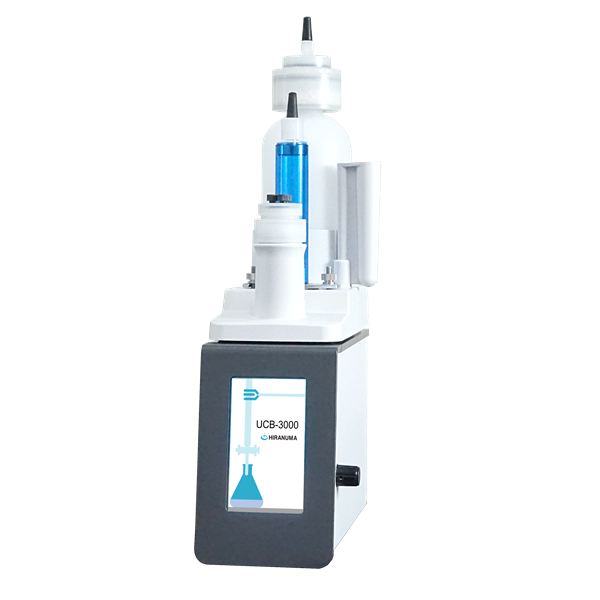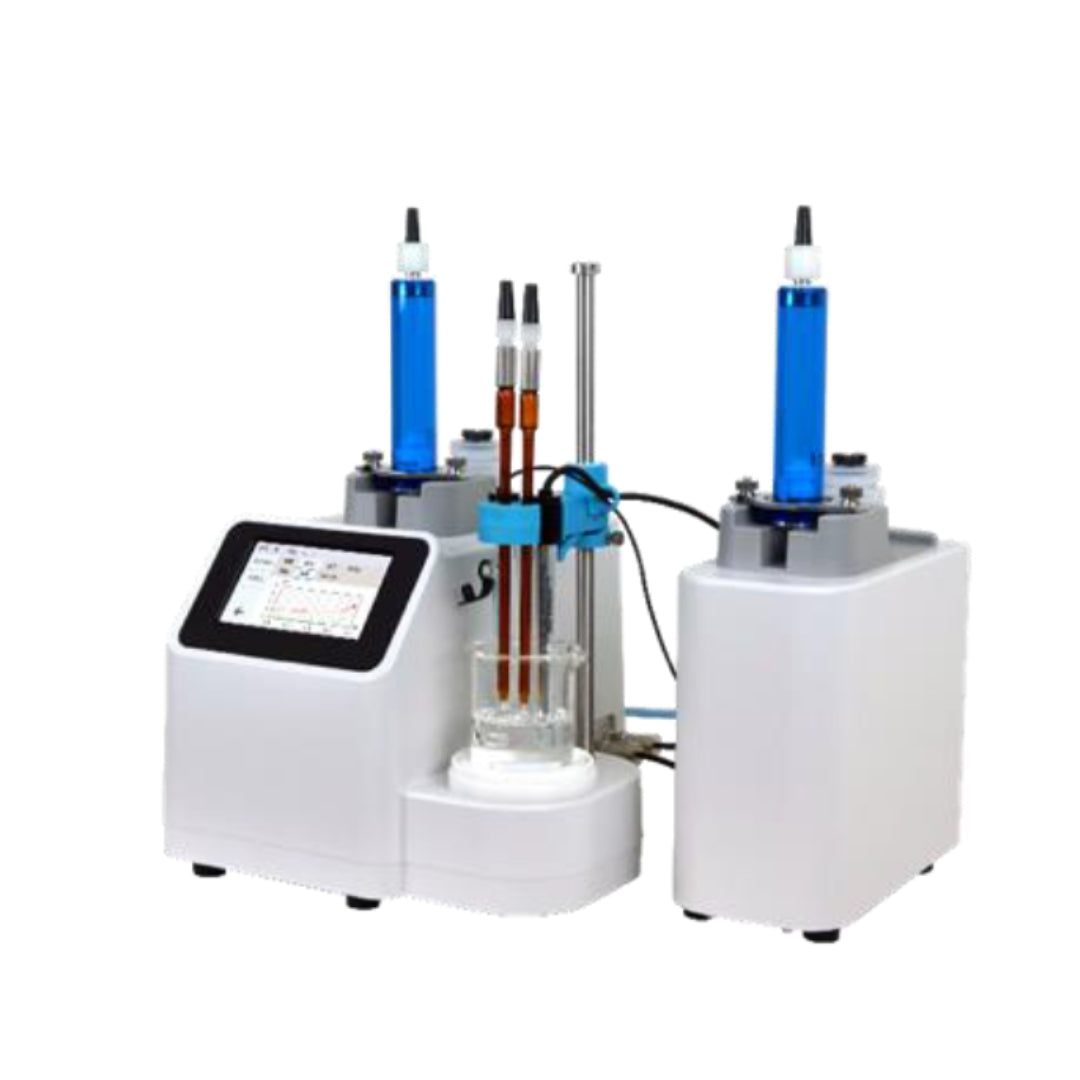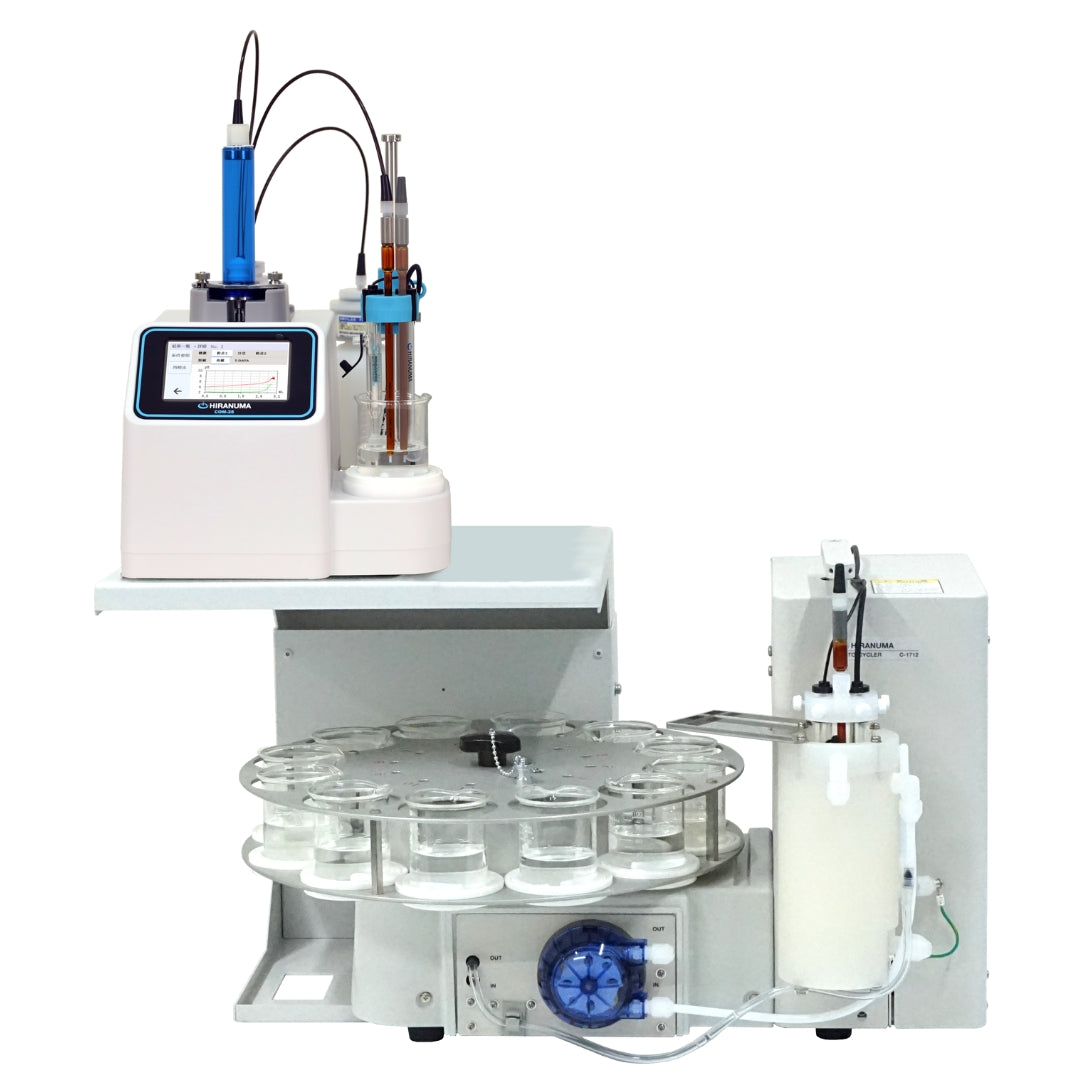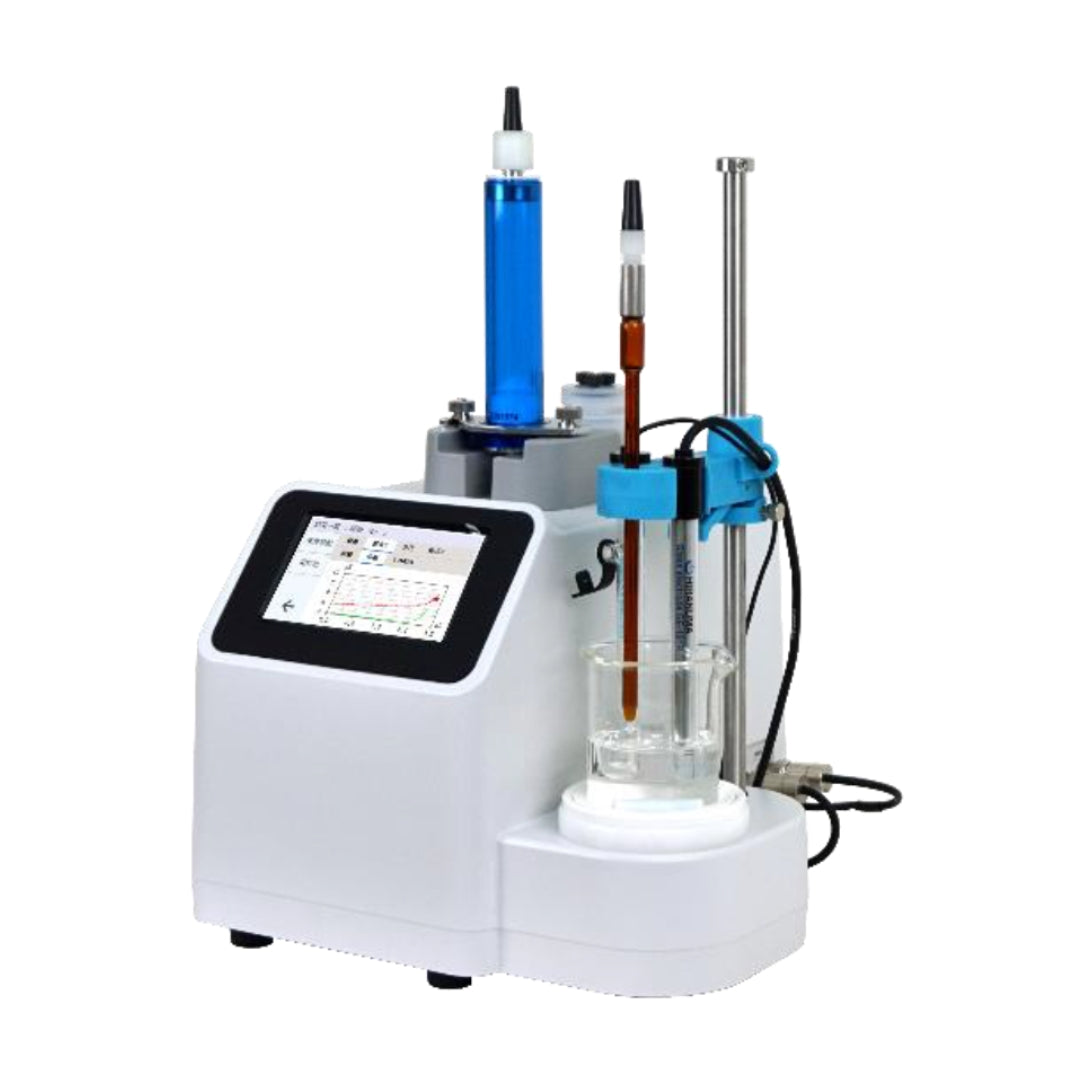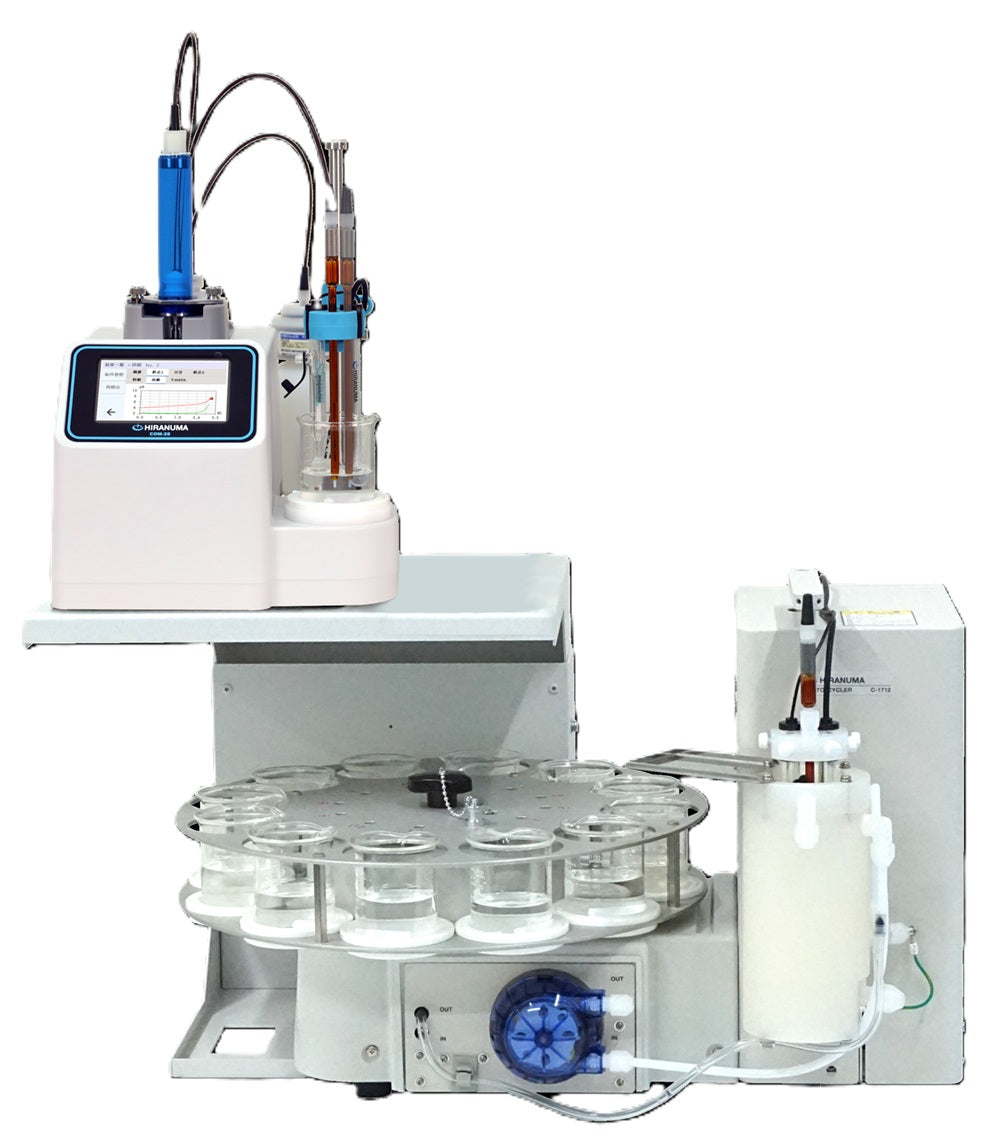| HIRANUMA APPLICATION DATA | Automatic Titrator | Data No. | G9 | Apr. 5,2019 |
| Metals | Quantitative determination of lead ion |
1. Abstract
The chelatometric titration is generally used for the determination of lead ion (Pb2+). The pH region the lead ion can be directly titrated is pH 3.5 ~ 10 (stability constant = 17.88).1 However, it generates Pb(OH)2 precipitation at alkaline region. When performing titration under alkaline condition, the auxiliary complexing agent such as ethanolamine, tartaric acid, or citric acid should be added in advance to generate weak chelatometric complex and avoid the generation of lead hydroxide precipitation.
It is titrated at pH around 4 ~ 5 when performing under acidic condition. This report introduces an example that the lead ion in sample solution adjusted to pH 5 by hexamine solution is determined with using XO indicator (red purple →yellow).
| Pb²+ + Na₂EDTA → Pb-EDTA + 2Na+ |
2. Configuration of instruments and Reagents
| (1) | Configuration | ||
| Main unit | : | Hiranuma Automatic Titrator COM series (Photometric titrator unit type M) with 530 nm optical filter |
|
| Electrode | : | Glass – Reference electrode GR-501BZ (for pH confirmation) | |
| (2) | Reagents | ||
| Titrant | : | 0.01 mol/L EDTA standard solution | |
| Buffer solution | : | 5 ~ 10 mL of 20 % hexamine solution | |
| Indicator | : | 0.2 mL of XO indicator (0.1 % solution) | |
3. Measurement procedure
| (1) | Dispense 1 mL of sample into a 100 mL beaker with volumetric pipette. |
| (2) | Add about 60 mL of DI water. |
| (3) | Add hexamine solution to adjust the pH to 5. |
| (4) | Add 0.2 mL of XO indicator. |
| (5) | Immerse photometric probe into sample solution and titrate with 0.01 mol/L EDTA standard solution. |
4. Measurement conditions and results
Examples of titration conditions

Measurement results
| Number of measurement |
Size (mL) |
Titrant volume(mL) |
Lead ion Concentration (g/L) |
|---|---|---|---|
| 1 | 1 | 9.998 | 20.737 |
| 2 | 1 | 9.997 | 20.735 |
| 3 | 1 | 9.931 | 20.598 |
| Statistic calculation |
Avg. | 20.69 g/L | |
| SD | 0.080 g/L | ||
| RSD | 0.385 % | ||



